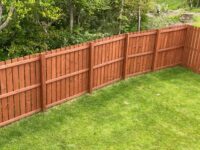Roofing – The Silent Guardian of Your Home
The roof is the silent guardian of your home, shielding you and your loved ones from the elements. Keeping it in good shape means fewer leaks and lower energy bills.
There is a wide variety of roofing materials available. This article will delve into the most common types, including their pros and cons. For professional help, contact Arthur’s Roofing.
Roofing is one of the oldest construction industries. Its origins date back thousands of years, when people first started building shelters from the elements. These early structures were often built from whatever natural materials were available, such as animal skins, mud, sticks and branches. But as hunting expeditions grew longer and people migrated to different areas, the need for permanent and more flexible shelters arose.
There are a number of materials that can be used for roofing, each with its own set of advantages and disadvantages. Some of the most popular are asphalt shingles, clay tiles, wood shingles and shakes, slate, and metal roofing. Slate roofs are often seen on luxury homes and can be extremely durable, lasting for decades or even centuries. Clay tile roofs are molded from earthen clays and then fired in a kiln to harden them. They are available unglazed for a natural look, or they can be glazed for color and durability. They are an excellent choice for hot climates and are also resistant to salt air.
A popular alternative to clay is concrete, which is long lasting and highly durable. It is also relatively inexpensive. However, concrete is heavy and might require additional framing support for a roof. It is also fragile and can break if walked on, so it may not be suitable for a high-traffic area.
Wood shingles and shakes are a traditional type of roofing that gives a home a classic, rustic look. They are a cost effective option for homeowners who want a natural looking roof that lasts about 60 years. However, they do not do well in damp conditions.
Another type of shingle is composite, which has the appearance of other, more expensive shingles and offers some of their benefits. It is highly water resistant and offers good fire resistance, and it can last up to 30 years.
Roll roofing is one of the simplest types of roofing and is used for low-slope residential roofs and outbuildings like sheds and shops where appearances are not important. It consists of long rolls of asphalt-impregnated material that are topped with mineral granules. It is inexpensive, has decent fire resistance, and is easy to install.
Flat or low-sloped roofing is more difficult to work on and requires specialized knowledge and expertise to repair or replace. It is most often treated with rubber, thermo-polyolefin (TPO), or PVC membranes. Metal roofing is sometimes used on flat or low-sloped roofs, and it can be either galvanized steel or aluminum.
Installation
The roof is your home’s main shield against the elements. It is what protects the structure and its contents from rain, sun, hail, snow, wind, and other natural forces. It is also what keeps the temperature in your house stable and comfortable. The roof’s importance cannot be understated, which is why it’s important to maintain and repair it when needed.
The Roofing Process
Once the contract is signed, the roofing team will begin to prep the work site. This includes finding an access point, clearing any debris or obstructions, and covering anything near the roof with tarps or wooden boards to keep it protected from falling materials during construction. The team will also cover your yard or patio furniture, if applicable, and ensure any vehicles are kept on paved surfaces to prevent them from getting covered in roofing debris.
When the crew is ready to start, they will remove any existing shingles and begin preparing the roof for the new material. This may include installing underlayment, which acts as a second line of defense against leaks and water intrusion – even if the top layer suffers minor damage. The roofer will also waterproof the eaves with drip edge flashing and the valleys of the roof with ice and water sheathing. They will also add vents, if necessary, for attic ventilation and to help reduce energy costs.
During this time, the roofer will lay the first course of shingles. They will overlap each shingle by at least one ridge and stagger them to offset the gaps between rows. They will then trim off any excess shingle with a utility knife, using a hook blade for maximum safety and accuracy.
The installation timeline will depend on a number of factors, such as the roofing contractor’s experience level and the size of their crew. Larger, more experienced crews are usually able to work more efficiently and will be less likely to make mistakes that can delay the project. In addition, local building codes, permitting requirements, and inspections can all add to the overall timeline of the project.
Maintenance
Keeping a roof in good condition is the main shield that protects a building and everything inside it from the elements. The structure is essential to a home or commercial space and proper maintenance helps prevent expensive repairs and energy loss. From identifying potential problems to performing regular inspections, there are a number of things that can be done to ensure a roof’s longevity.
Identifying Potential Problems
A roof’s condition can be assessed with a simple water spray test. A homeowner can spray a suspected area with a garden hose while someone inside listens for any dripping sounds. This can help pinpoint the source of a leak and save costly damage.
Other problems to watch for include:
Loose or missing shingles
If a shingle is loose or damaged, it can cause water intrusion during stormy weather and should be replaced immediately. It is also important to check the flashing around chimneys, skylights, air conditioning vents, and exhaust pipes for any cracks or leaks. Most leaks are caused by flashing, so it is crucial to inspect and maintain it regularly.
The eaves should be examined for clogged gutters and downspouts, which can lead to moisture infiltration. In addition, the area should be checked for moss growth and any areas where debris has accumulated. Lastly, the slope of the roof should be assessed. Sloped roofs can be more prone to leaks than pitched ones, as water tends to pool in low spots and overflow.
A final step is to trim tree branches that hang over the roof. This is especially important during bad weather conditions or windy nights, and it helps avoid damage to shingles from falling limbs. Additionally, long limbs can interfere with proper drainage and may allow rodents or pests to enter the home. A professional can be hired to complete this task safely and quickly.






